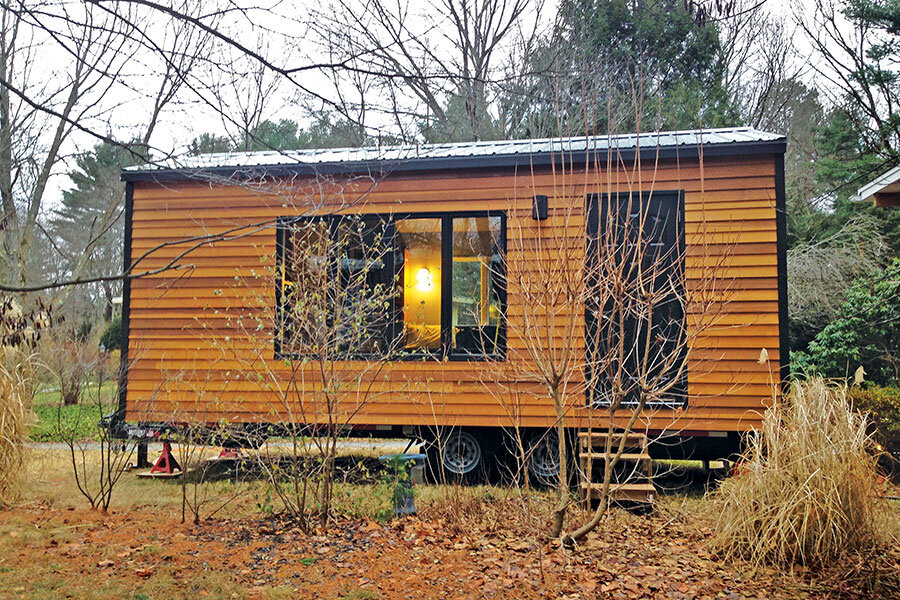Tiny house owners search for an urban roost
Loading...
First came urban chicken coops, then food trucks. The latest trend to test city zoning laws? Tiny houses built on trailer beds.
Tiny homes – not all of them mobile – grabbed headlines when they were offered up as a housing solution after hurricane Katrina in 2005, and they are continuing to gain momentum as a lifestyle option. Their pared-down simplicity – which living in 250 square feet requires – has come to embody many things: an oasis in a stormy economy, DIY ingenuity, green living, and, in some cities, the answer to homelessness. Whether it is by midlifers sunk by foreclosure or young adults paying for their education, the reach for tiny houses is being embraced as a scaled-down version of the American dream.
“Most of us can’t afford to buy a house because of the economy and debt from student loans,” says Miranda Aisling, a 20-something who recently hosted a tiny house meetup in Cambridge, Mass., to explore ways to forward “the movement.”
A typical tiny house costs between $20,000 and $25,000 for materials in addition to architectural plans that range from $300 to $500.
But most cities have strict zoning laws against parked mobile homes. “You have to be an advocate or fly beneath the radar,” says Ms. Aisling.
The movement on the East Coast seems like a reluctant campfire when compared with the spread of tiny houses in other areas such as the Northwest. They can be tucked into rural outposts without much notice, but now more advocates are trying to see how they can fit into neighborhoods.
Christopher Page of Andover, Mass., had an epiphany when he saw the documentary “Tiny: A Story About Living Small.”
“I’m sort of a minimalist, but the idea of building one’s shelter with one’s own hands really appealed to me,” says Mr. Page, who built his tiny house at his dad’s suburban home. He has been monitoring tinyhouselistings.com and posting on Craigslist, hoping to find a city driveway to rent closer to friends.
It might take a while. “At the moment, there are more people looking for space than renting,” he says.








